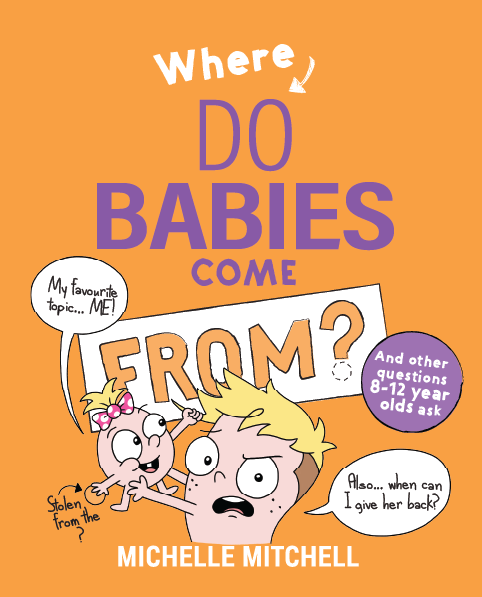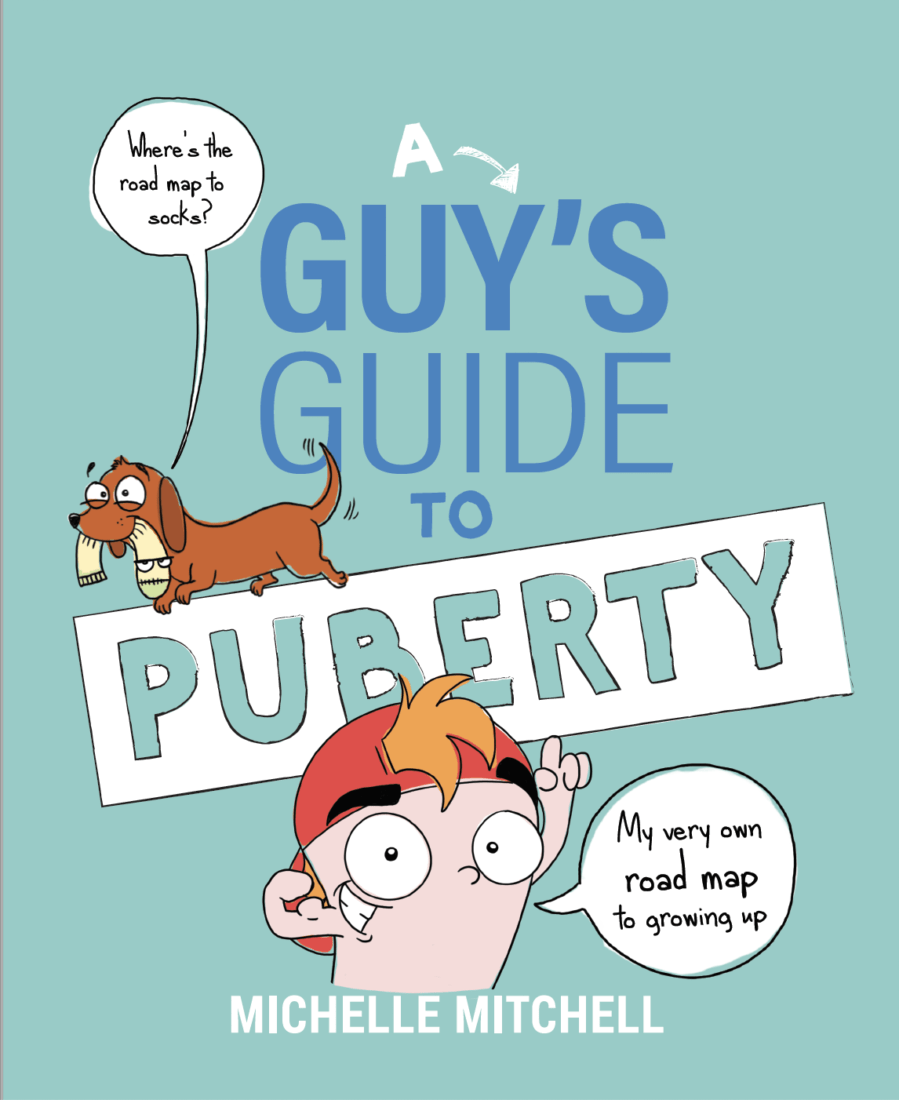michelle's blog
Talking to Kids About Puberty and Sex: 10 Ways to Start the Conversation
read

Most parents tell me that topics like puberty or sex weren’t freely spoken about when they were young. For many, puberty just arrived, and they were left to work out the details by themselves. When it came to the birds and the bees, we were often handed an educational book with the instructions, “Come to me if you have any questions.” I know we can do a whole lot better for our kids.
Today’s highly sexualised world demands that parents step more deliberately into this space. We have a big job on our hands, and ‘the chat’ is now all inclusive of topics that reach into cyber safety, body image, consent and protective behaviours. These are topics we heard very little about when we were young, so it’s no wonder we often feel out of our depth.
If you are unsure how to comfortably initiate conversations, you are not alone. Responding to this generation’s needs is new and uncharted waters for everyone. That is why I have written these books to help: A Girl’s Guide to Puberty, A Guy’s Guide to Puberty and Where Do Babies Come From and other questions 8 – 12 year olds ask.
Be assured that these books are written with the understanding that one size does not fit all children. Factors like IQ, maturity, temperament, life experience and birth order all impact our kid’s readiness. How you choose to talk can also be impacted by your own experiences, biases and needs, so be conscious of this.
In this blog I want to offer you ten practical strategies, designed to help you kick start a conversation with both the most enthusiastic and reluctant of talkers. They are a set of tried and tested ideas that will help you get conversations started. Most importantly, I hope they help you connect with your child as they grow.
Tip 1: Remember safety, joy and choice. High-quality conversations need three things: safety, joy, and choice. These aren’t just niceties. They’re essential ingredients that keep hearts and brains open to learning. To incorporate safety try saying, “You can ask me anything, even if it feels embarrassing. That’s what I am here for.” or “You will never be in trouble for talking to me. I would only ever feel proud of you, no matter what.” To incorporate choice, give kids the opportunity to choose the where and when conversations will take place, and even the option of saying, “I’m done for now.” And well, joy… bring a sense of humour!
Tip 2: Lower the bar. Sounds weird doesn’t it? Yet, if we initially set the bar low enough to easily achieve an okay conversation, then you can build from there. Aim to eventually have conversations that are good, and then very good, but don’t put this pressure on yourself to have a big deep and meaningful from the beginning. If things get off to a rocky start, remember that the more conversations you have, the easy they will become – guaranteed.
Tip 3: Reframe question time. If we want open conversations about any sensitive topic, we have to be prepared to initiate them. Please don’t ever ask a child to come to you with their questions. Go to them, and if they ask questions it is a bonus. Instead of asking, “Do you have any questions?” ask, “What questions do you have?” This subtle reframe which implies questions are normal.
Tip 4: Start with the least sensitive information. Start with the least sensitive information (like hygiene and using deodorant) and slowly build up. When they start glazing over, start again another day. You have time. Kids are only able to learn when they feel safe. Panic is education’s greatest enemy because it shuts down the brain! If conversations are necessary, but comfortable, try saying, “What would make this bearable? Could we talk for 5 minutes and then stop?”
Tip 5: Short chats work well. You don’t have to talk about everything in one conversation or one weekend. Consider preparing a range of short 2 -3 minutes conversations based on their current needs. These series set of well timed chats may end up best placed within your routine trips to school, or sports. Car chats are simply the best aren’t they?!
Tip 6: Give longer chats a time frame. For longer chats, let them know how long or they may opt out prematurely. I know this might sound weird, but they need to know you are going to shut-up at some stage! Try saying, “It’s going to take us about 40 minutes where would you like to talk? Shall we walk, go out for a milkshake or hang in your room?” I also recommend spending less than an hour, even if kids are loving the chat, so you leave things on a high.
Tip 7: Create a list. Try making a list of related topics and ask them to choose the topic they want to talk about. That way they can choose their entry point. Some kids will bring a whole lot to the conversation. Others won’t. Sometimes you don’t truly know what they know until they start talking!
Tip 8: More than facts. All technical information we offer kids needs to be underpinned with values. It’s easy to talk about facts (like growth spurts, periods and pubic hair or the mechanics of sex) but don’t forget the emotional changes that come with see-sawing hormones and brain changes. Prepare them for how they (and their friends) might feel, and how their experience of life might change. The ‘chat’ needs to be personal and engaging. The more we address these areas the more relevant it is.H

Tip 9: Alternative ways to communicate. Be creative, especially with reluctant communicators You might set up a shared journal, where your son or daughter can ask sensitive questions and have you answer them. Make sure you have a strict turnaround time of 48 hours with your response. I have made sure I have incorporated the features of reading, thinking, talking and drawing into my books, knowing that all kids learn differently, and prefer different communicate styles.
Tip 10: You are the expert. Believe it. If you have confidence in yourself, they will have confidence in you. We want our children to know that it is normal to talk to their friends about puberty, but they won’t be the best ones to go to when you need questions answered. We want them to have all their questions answered correctly, the first time.
Having a resource can be incredibly helpful for a parents, but please don’t let any resource be your child’s primary source of education. Think of a resource as an extension of you, not a replacement of you. Try saying, I have read this book and I think it might be helpful. Page 148 is pretty funny. It was my favourite.
You can find my resources here.Each shop page has a content outline, a flip book tour of all their pages and commonly asked questions:
A Girl’s Guide to Puberty
A Guy’s Guide to Puberty
Where Do Babies Come From… and other questions 8 – 12 year olds ask
nEW here?
If you are new to my blog, I’m guessing that someone you trust mentioned my name, or you stumbled upon me online. This site is full of helpful parenting ideas that will help you make decisions with more confidence.
If you have something specific you are looking for, why not search the topics below. If you just want to browse, why not start by reading my most popular posts.
If you would like to receive Michelle’s blog via email each month, simply sign up below, indicating if you are a parent or a professional.

top reads
- 1. Try Being 5 Minutes Late: Common Sense Ideas to Promote Resilience
- 2. How to Deal with an Entitled Teen: Strategies You Can Use Today
- 3. Choosing a Counsellor: Ideas That Could Make All the Difference
- 4. Even If: Conversations to Combat Anxiety
- 5. What to Say if Your Child is Self-Harming: A Guide to the Initial Discussion


